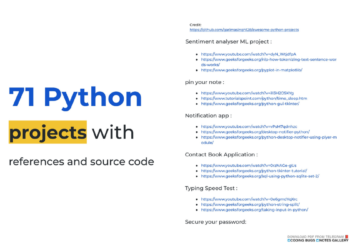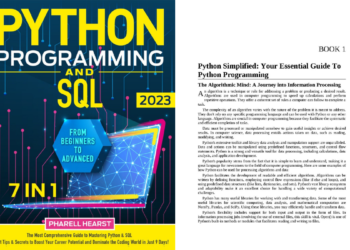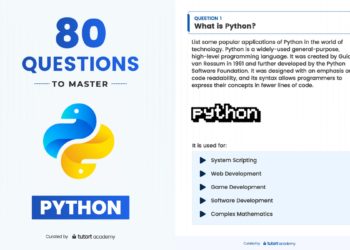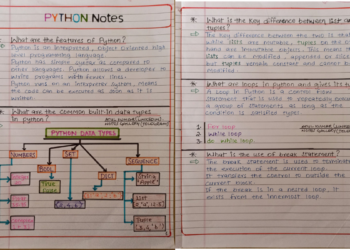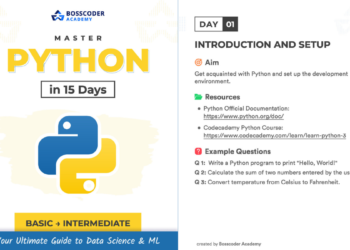OOPS in Python Handwritten Notes (PDF): Your Comprehensive Guide to Object-Oriented Programming in Python
Object-Oriented Programming (OOP) is a powerful paradigm that allows you to create modular, reusable, and scalable code. Python, with its elegant syntax and extensive support for OOP principles, makes it an ideal language for mastering OOP concepts.
To help you understand and apply OOP in Python effectively, we present “OOPS in Python Handwritten Notes (PDF)”—a comprehensive guide that provides detailed handwritten notes on OOP principles in Python.
Why Our Object-Oriented Programming in Python
In this Guide , we’ll explore “OOPS in Python Handwritten Notes (PDF)”—an invaluable resource that covers the fundamentals of OOP and its implementation in Python. Whether you’re a beginner or an experienced developer looking to enhance your OOP skills, this guide will serve as your trusted companion, offering clarity and guidance throughout your journey.










Introduction to Object-Oriented Programming:
The guide starts by introducing the principles of Object-Oriented Programming. It explains the core concepts of objects, classes, inheritance, polymorphism, and encapsulation. By understanding these foundational concepts, you’ll be well-equipped to leverage the power of OOP in Python.
Classes and Objects:
The guide delves into the implementation of classes and objects in Python. It covers topics such as defining classes, creating objects, accessing attributes and methods, and understanding the concept of self. With detailed explanations and code examples, you’ll gain a solid understanding of how classes and objects work in Python.
Inheritance and Polymorphism:
Inheritance allows you to create new classes based on existing ones, promoting code reuse and extensibility. The guide explores inheritance in Python, including single and multiple inheritance, method overriding, and method resolution order. Additionally, it covers the concept of polymorphism, enabling you to write flexible and adaptable code.
Encapsulation and Abstraction:
Encapsulation and abstraction are essential principles in OOP. The guide explains how encapsulation provides data hiding and protects the internal implementation of classes. It also covers abstraction, which allows you to create abstract classes and interfaces for building modular and maintainable code.
Conclusion:
“OOPS in Python Handwritten Notes (PDF)” is an invaluable resource for anyone looking to master Object-Oriented Programming in Python. Whether you’re a beginner taking your first steps into OOP or an experienced developer seeking to deepen your understanding, this comprehensive guide will equip you with the knowledge and skills to leverage the power of OOP in Python effectively.
By providing detailed handwritten notes, explanations, and code examples, the guide demystifies OOP principles and their implementation in Python. It guides you through the intricacies of classes, objects, inheritance, polymorphism, encapsulation, and advanced OOP concepts. With this knowledge, you’ll be able to design modular, reusable, and scalable code.
So, download “OOPS in Python Handwritten Notes (PDF)” today and embark on an exciting journey into the realm of Object-Oriented Programming in Python. Let it be your trusted resource, offering clarity, guidance, and inspiration as you unlock the full potential of Python’s OOP capabilities. Happy coding!
Nu Of Pages
10 Pages
Download OOPS in Python Handwritten Notes PDF:
For Other Python Topics From here



